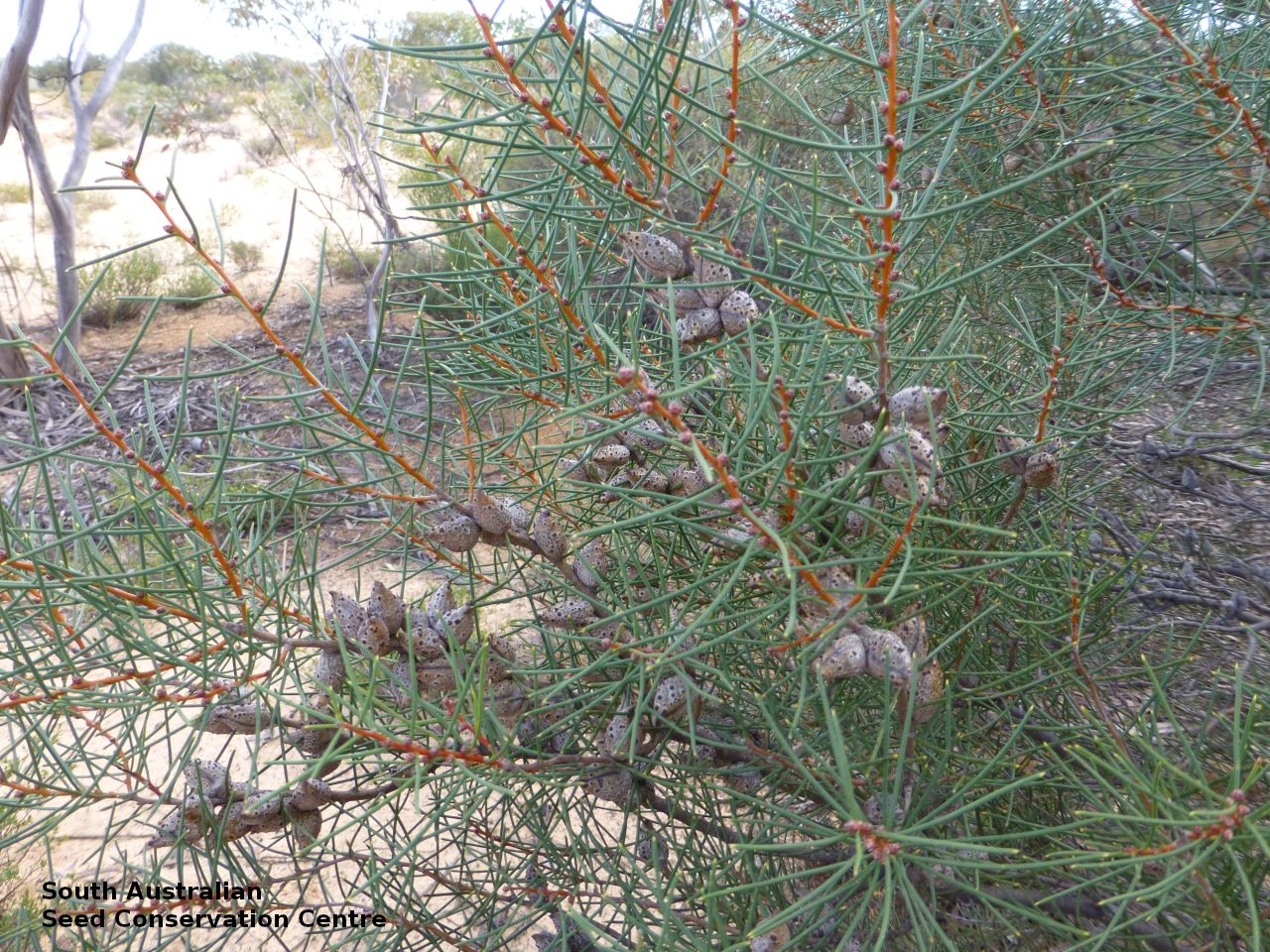
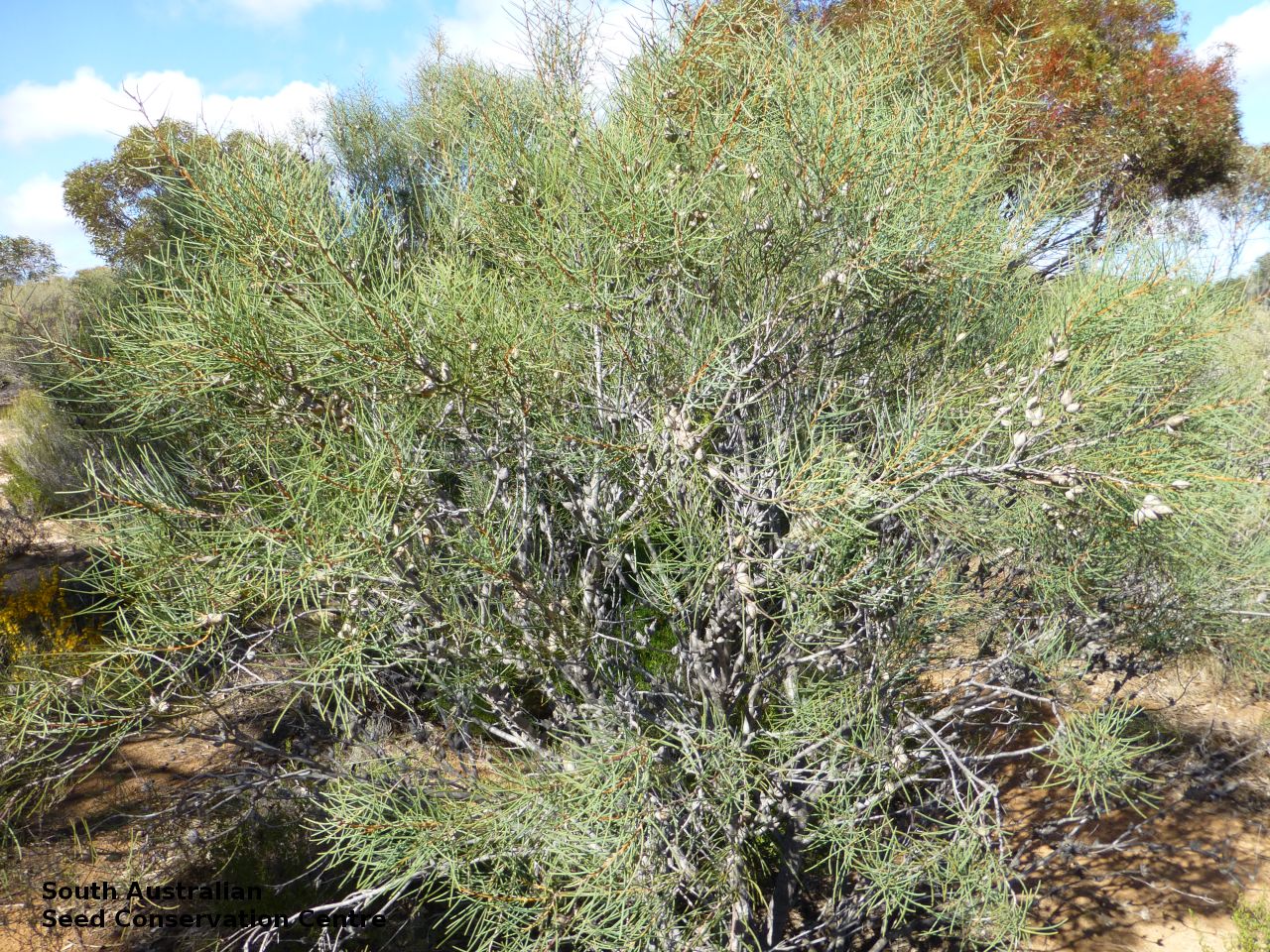

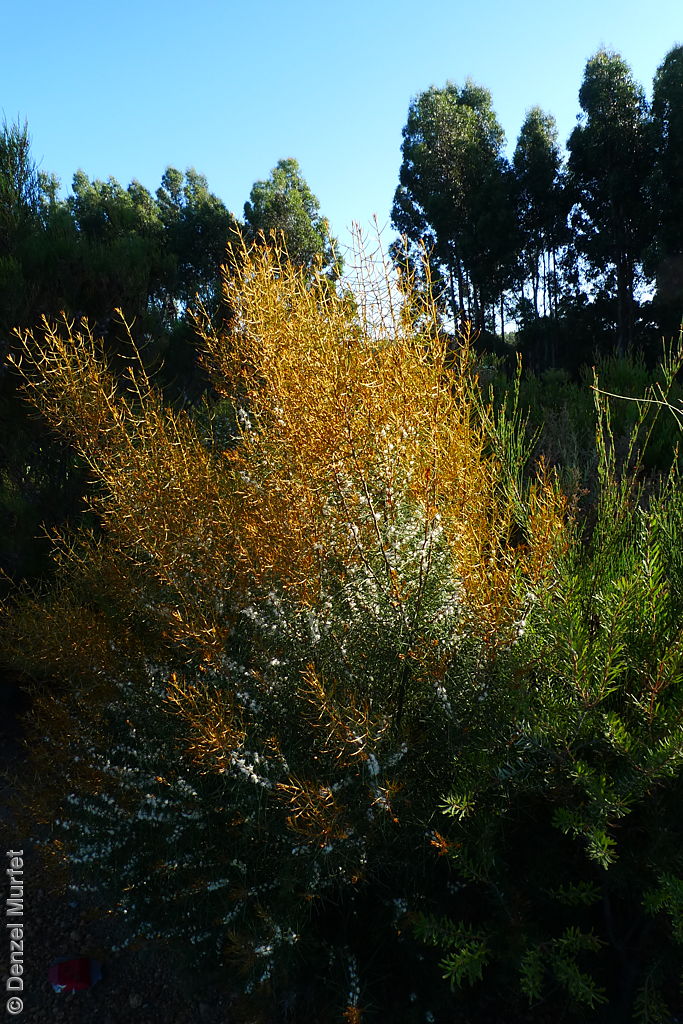
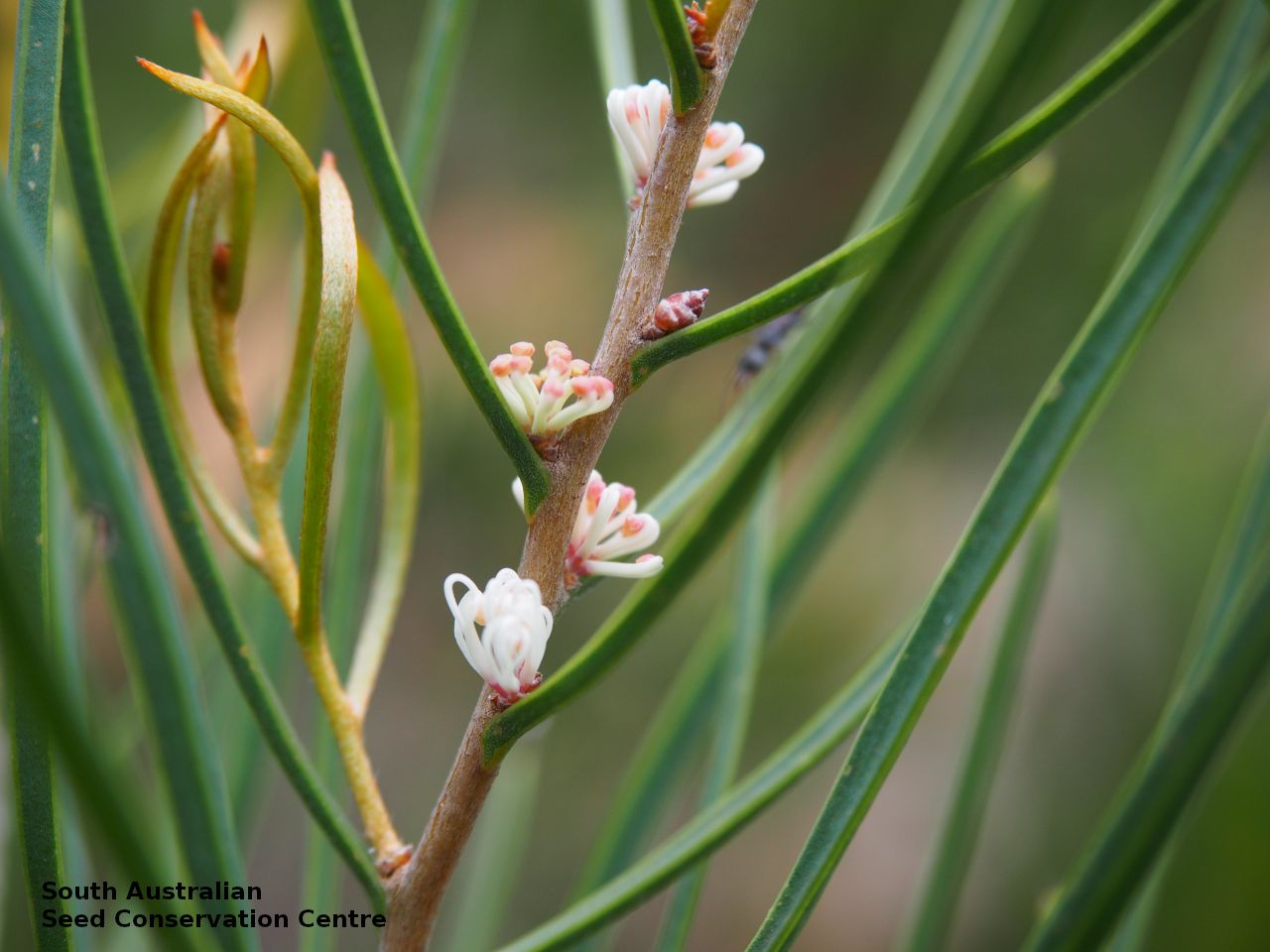
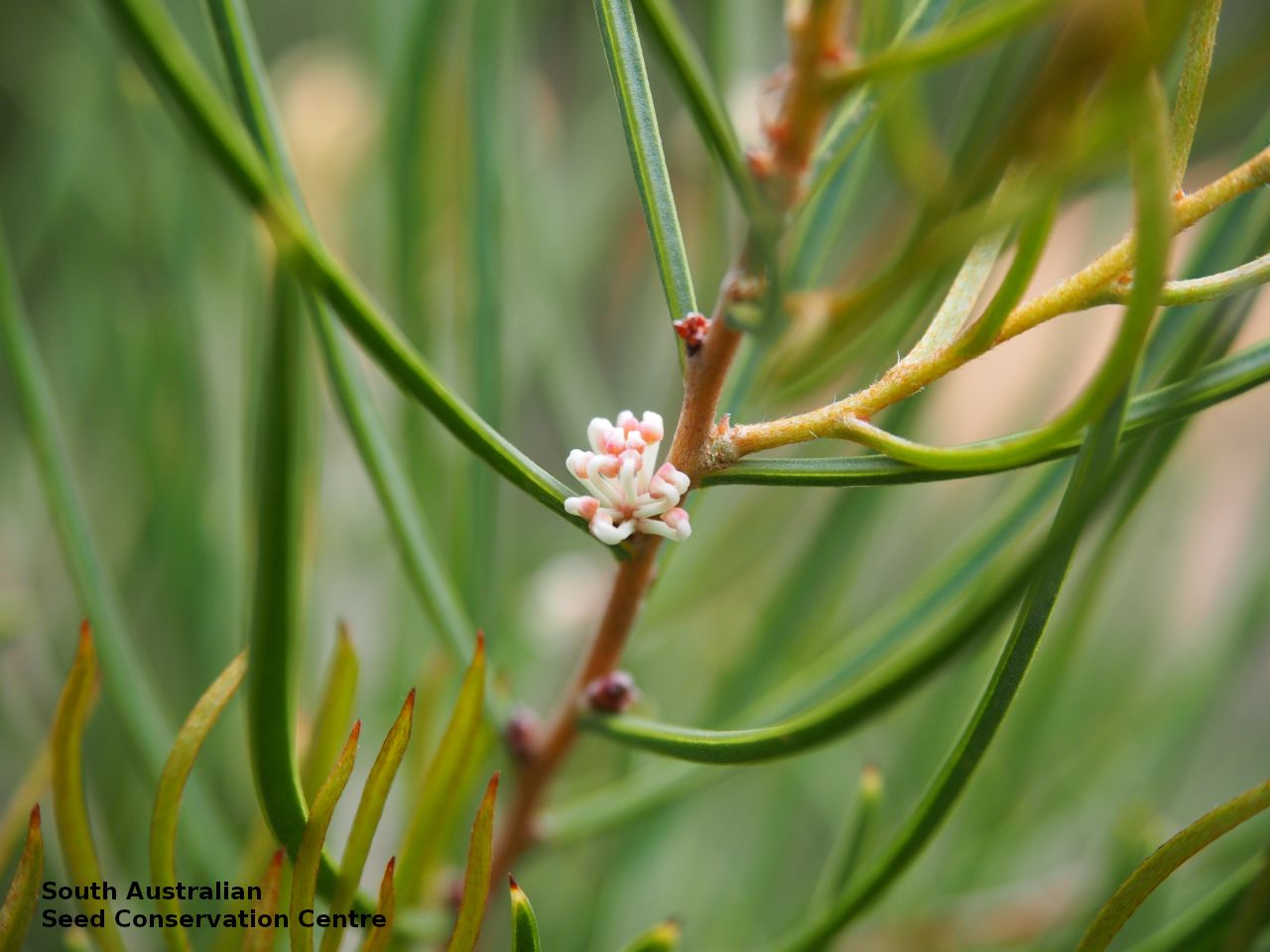
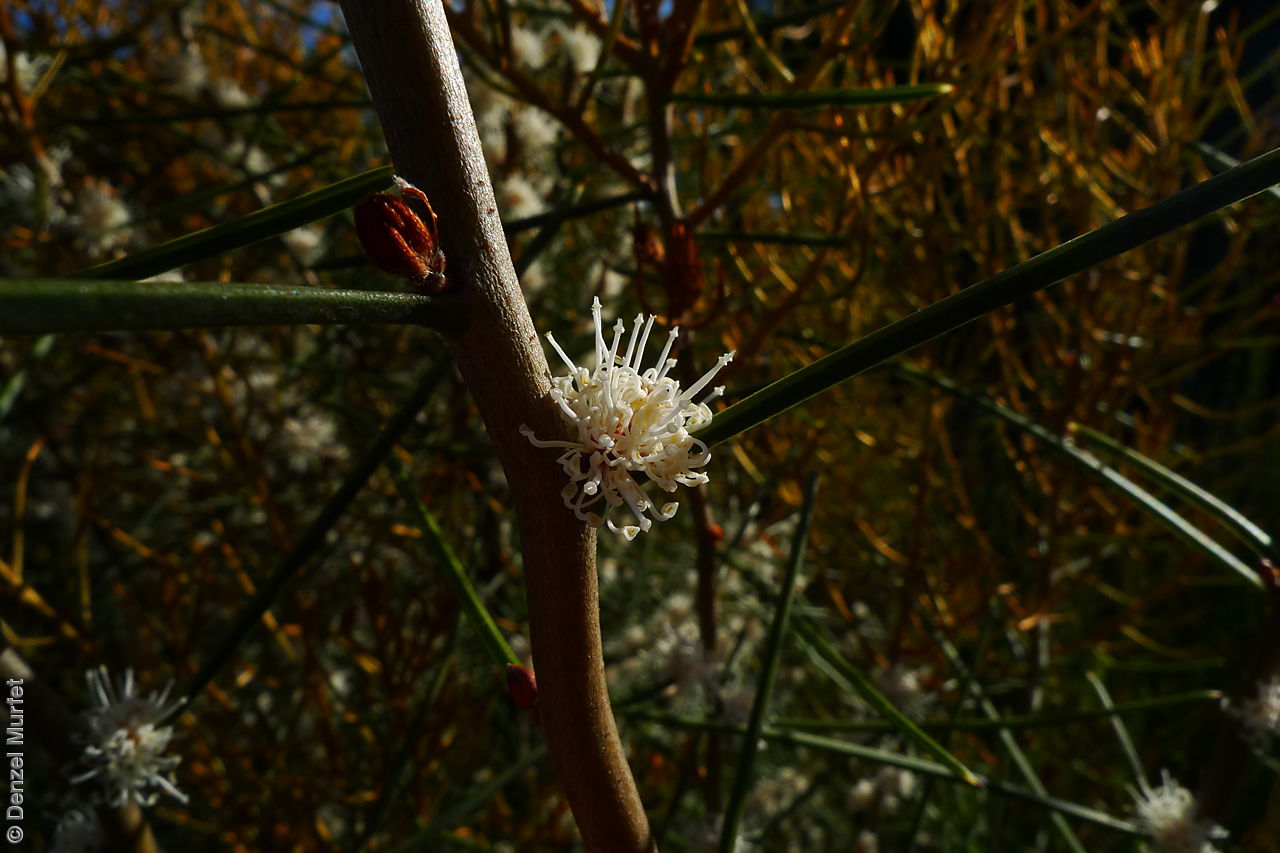
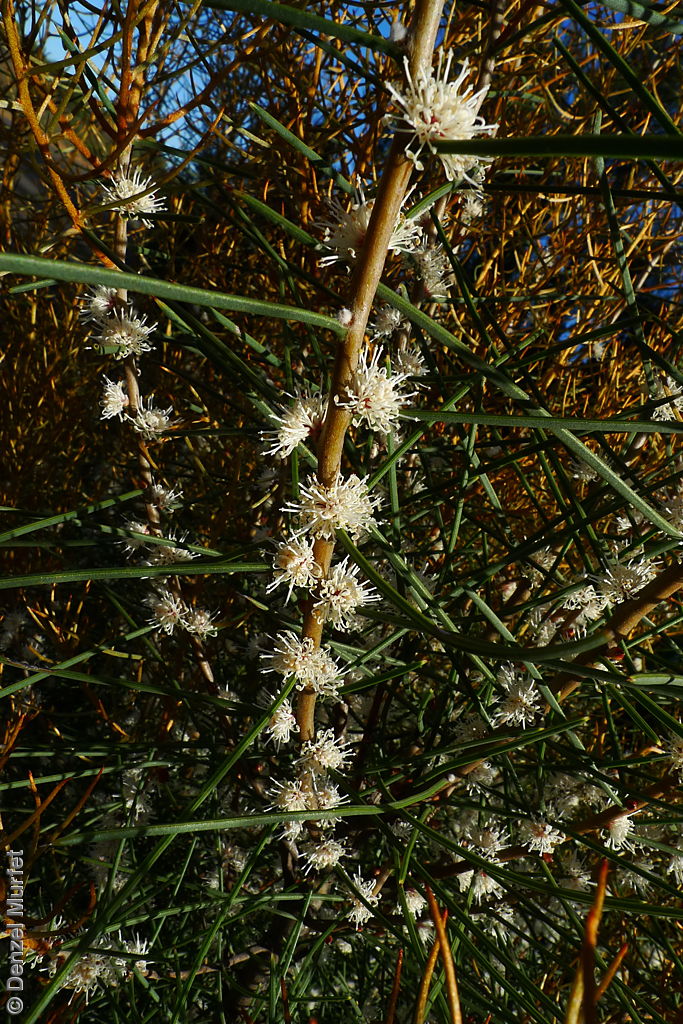
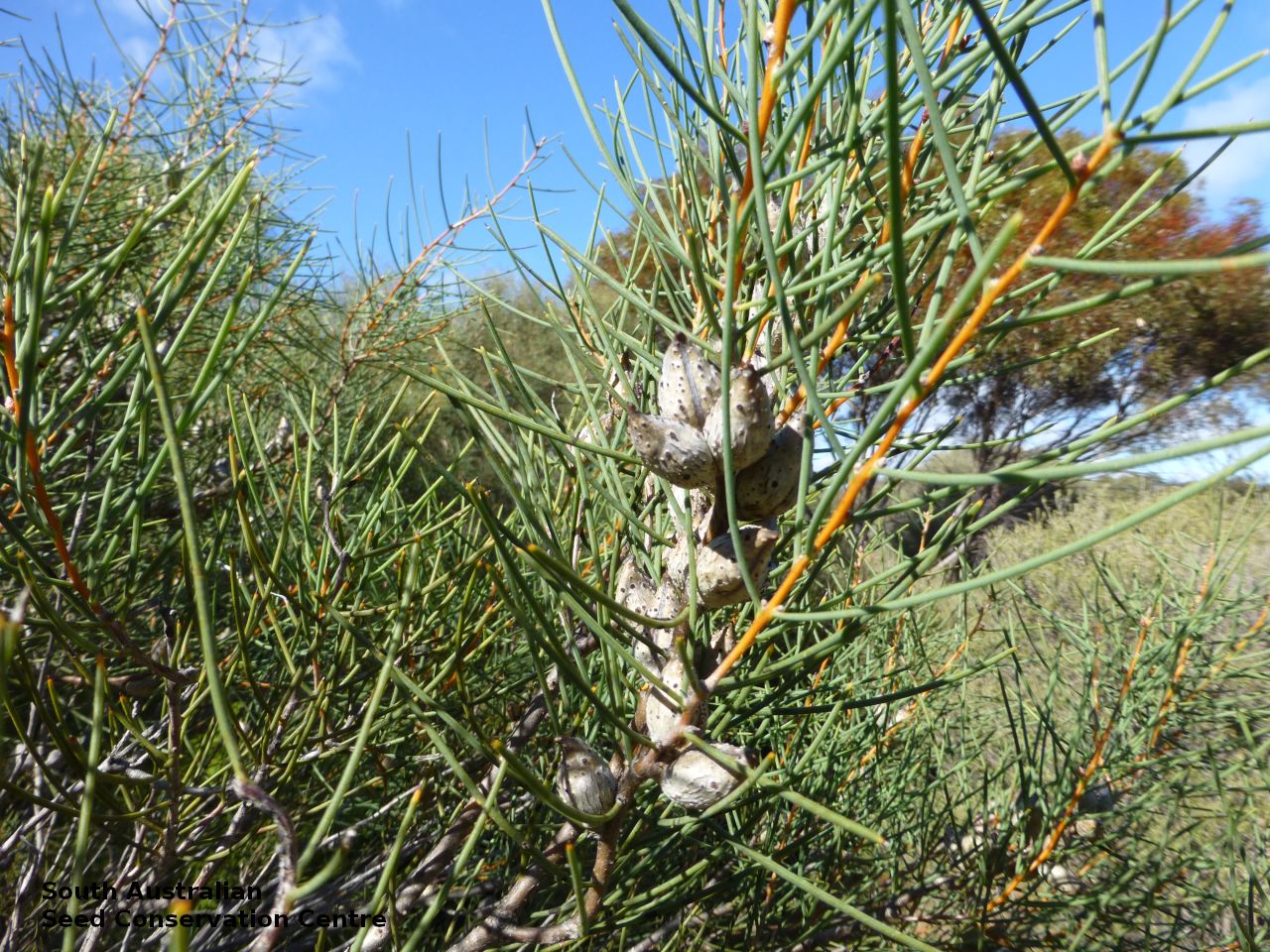
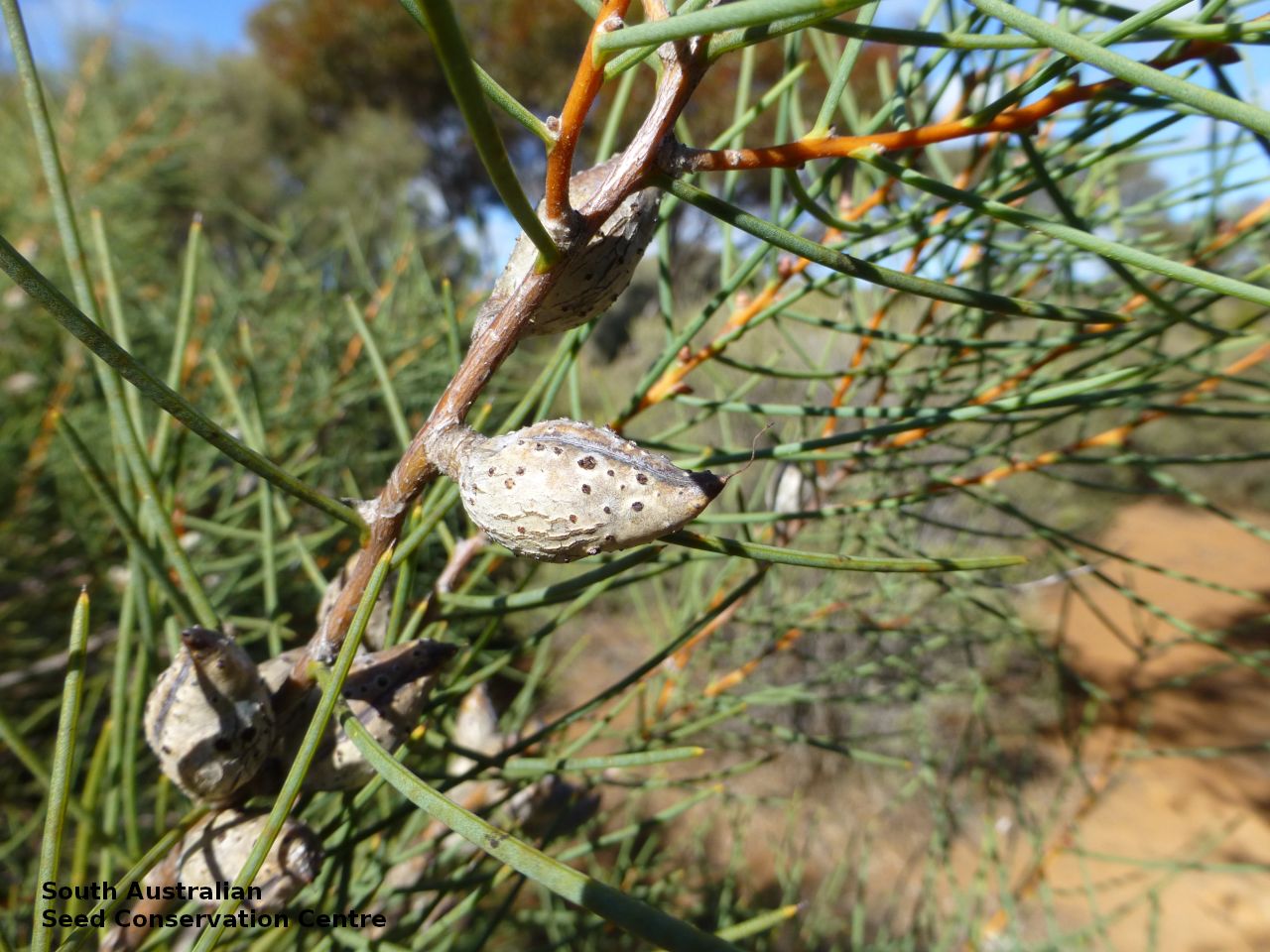
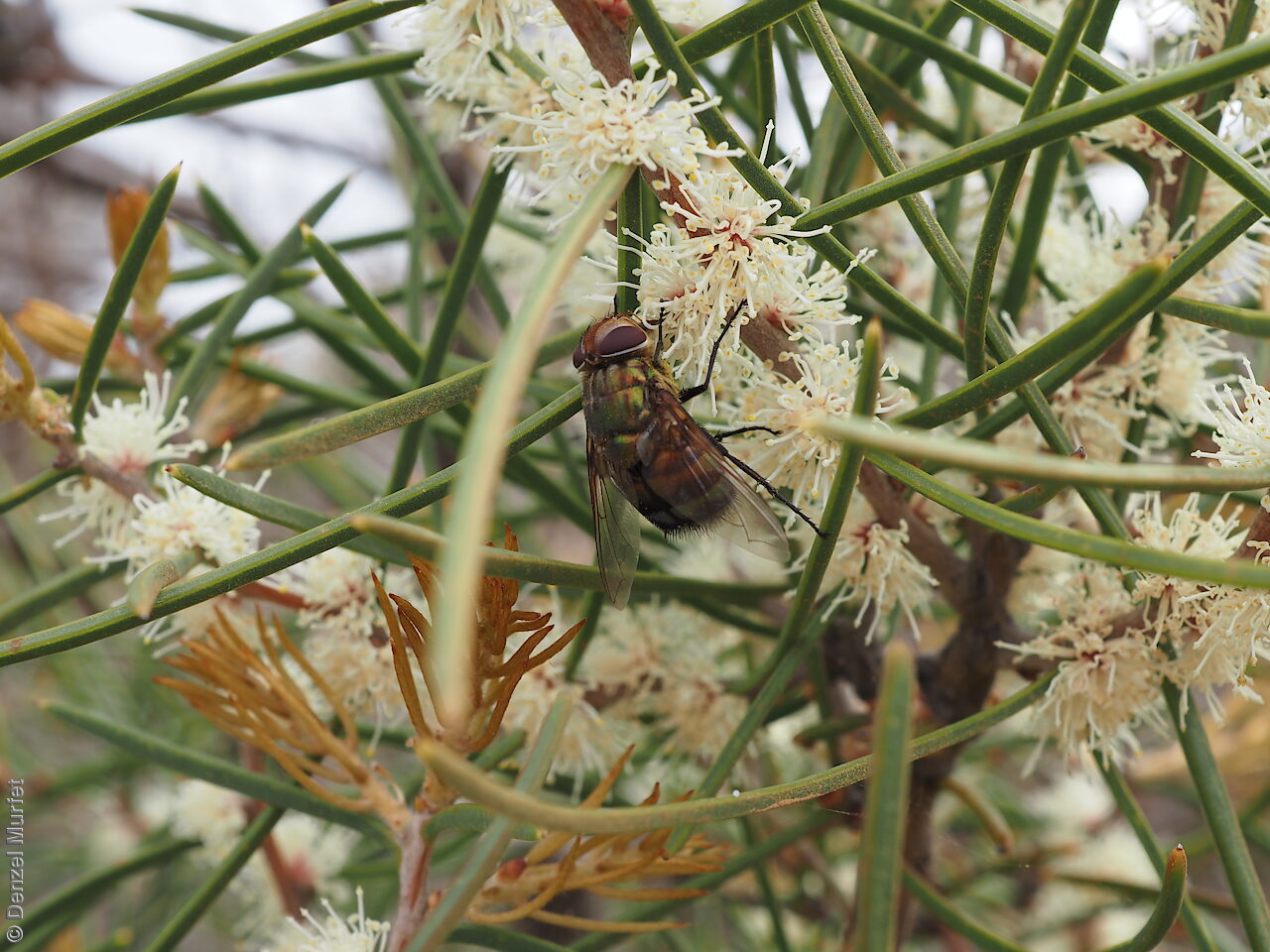
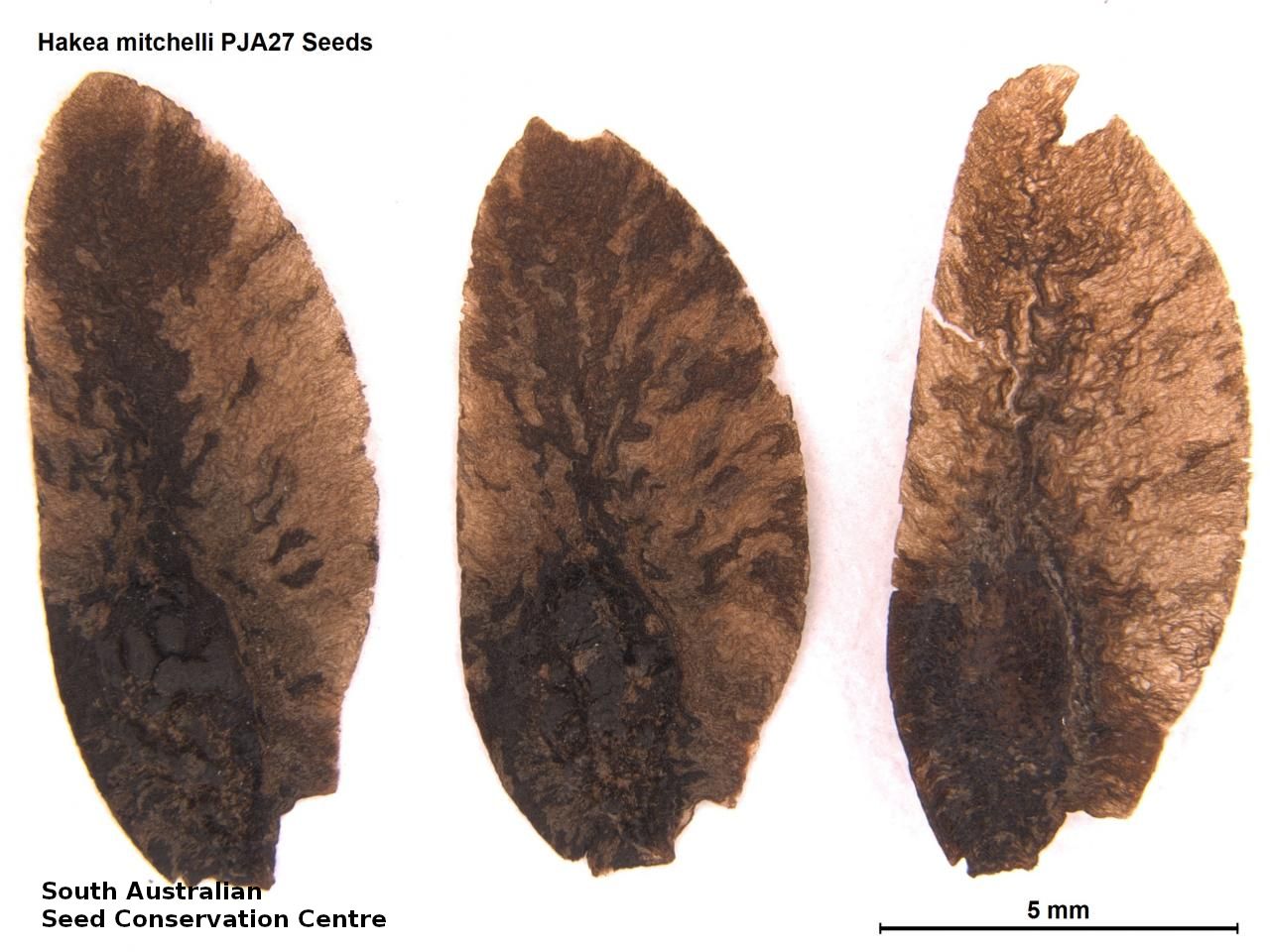

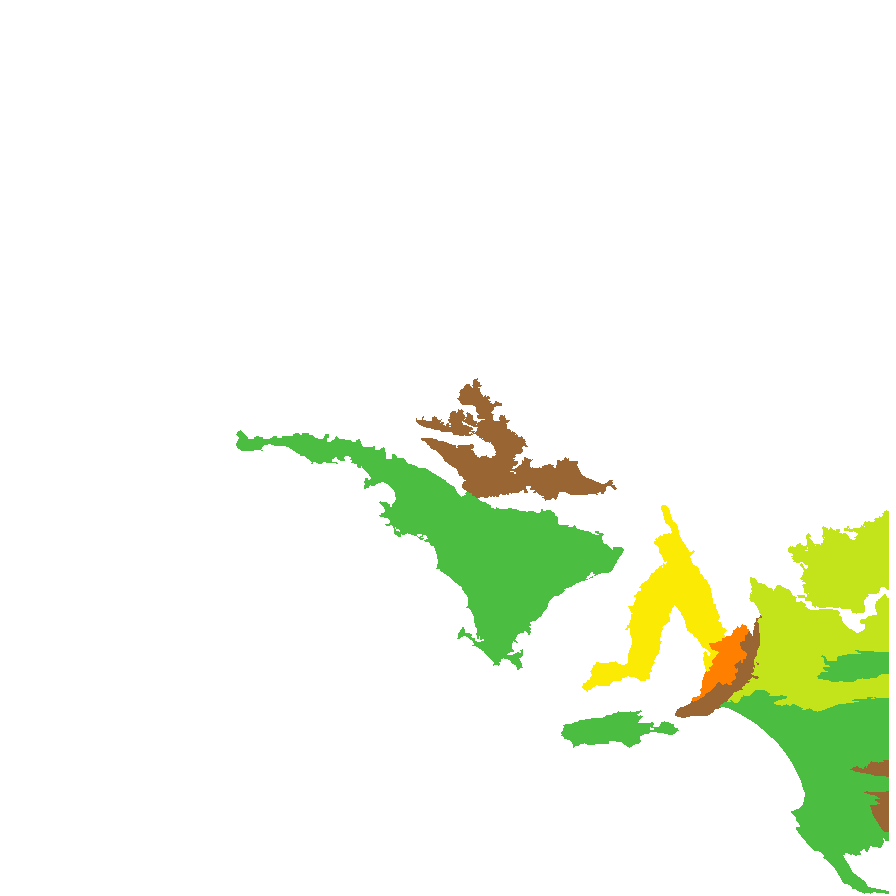
Botanical art
Prior names
Hakea ulicina var. flexilis
Hakea flexibilis
Hakea flexilis
Hakea muelleriana
Common names
Desert Hakea
Heath Needlebush
Etymology
Hakea, named after Baron Christian Ludwig von Hake (1745-1818), a German horticulturalist and patron of botany. Mitchellii, named after Major Sir Thomas Livingston Mitchell (1792-1855), a surveyor, explorer and botanical collector, including the type of the species.
Distribution and status
Found in southern South Australia, growing in mallee-heath vegetation on calcareous sandy soil. Also found in Victoria. Native. Common in South Australia. Common in Victoria.
Herbarium regions: Eyre Peninsula, Murray, Yorke Peninsula, Southern Lofty, Kangaroo Island, South Eastern, Green Adelaide
NRM regions: Adelaide and Mount Lofty Ranges, Eyre Peninsula, Kangaroo Island, Northern and Yorke, South Australian Murray-Darling Basin, South East
AVH map: SA distribution map (external link)
Plant description
Erect rounded shrub to 4 m tall. Leaves uniform or seasonally heteromorphic, subterete to linear and trigonous; rarely obovate-linear, concave; to 120 mm long and 10 mm wide, glabrous; venation not visible in terete leaves; longitudinal veins prominent in trigonous and flat leaves. Inflorescence a solitary axillary cluster with 16–36 white to pink flowers. Flowering between October and January. Fruits are greyish-brown woody ovoid fruit to 25 mm long and 13 mm wide, with a pointed tip. Fruit split into two, to reveal two seeds. Seeds are brown ovoid seed to 5 mm long and 2 mm wide (12 mm long and 5 mm wide including the wing that extend narrowly down both sides of seed). Seed embryo type is investing.
Seed collection and propagation
Collect seeds between January and December. Collect mature woody fruit that are hard, brown and not split. These will contain seeds. Place the woody fruit in a tray and leave to dry until it splits open. Place the dried fruit in a bucket and shake to dislodge the seeds from the valves. Separate the seeds from the fruit and store the seeds with a desiccant such as dried silica beads or dry rice, in an air tight container in a cool and dry place. From one collection, the seed viability was high, at 90%. Seeds are non-dormant, viable seed should germinate readily without pre-treatment.
| Location | No. of seeds (weight grams) | Number of plants | Date collected | Collection number Collection location | Date stored | % Viability | Storage temperature |
|---|---|---|---|---|---|---|---|
| BGA MSB | 2,800 (12.3 g) 2,800 (12.3 g) | 5 | 16-Sep-2003 | PJA27 Murray | 1-Sep-2004 | 90% | +5°C, -18°C |
Number of plants: This is the number of plants from which the seeds were collected.
Collection location: The Herbarium of South Australia's region name.
% Viability: Percentage of filled healthy seeds determined by a cut test or x-ray.